Culture
Diwali: preparing for the festival of lights
Diwali runs this weekend at the Halifax Forum
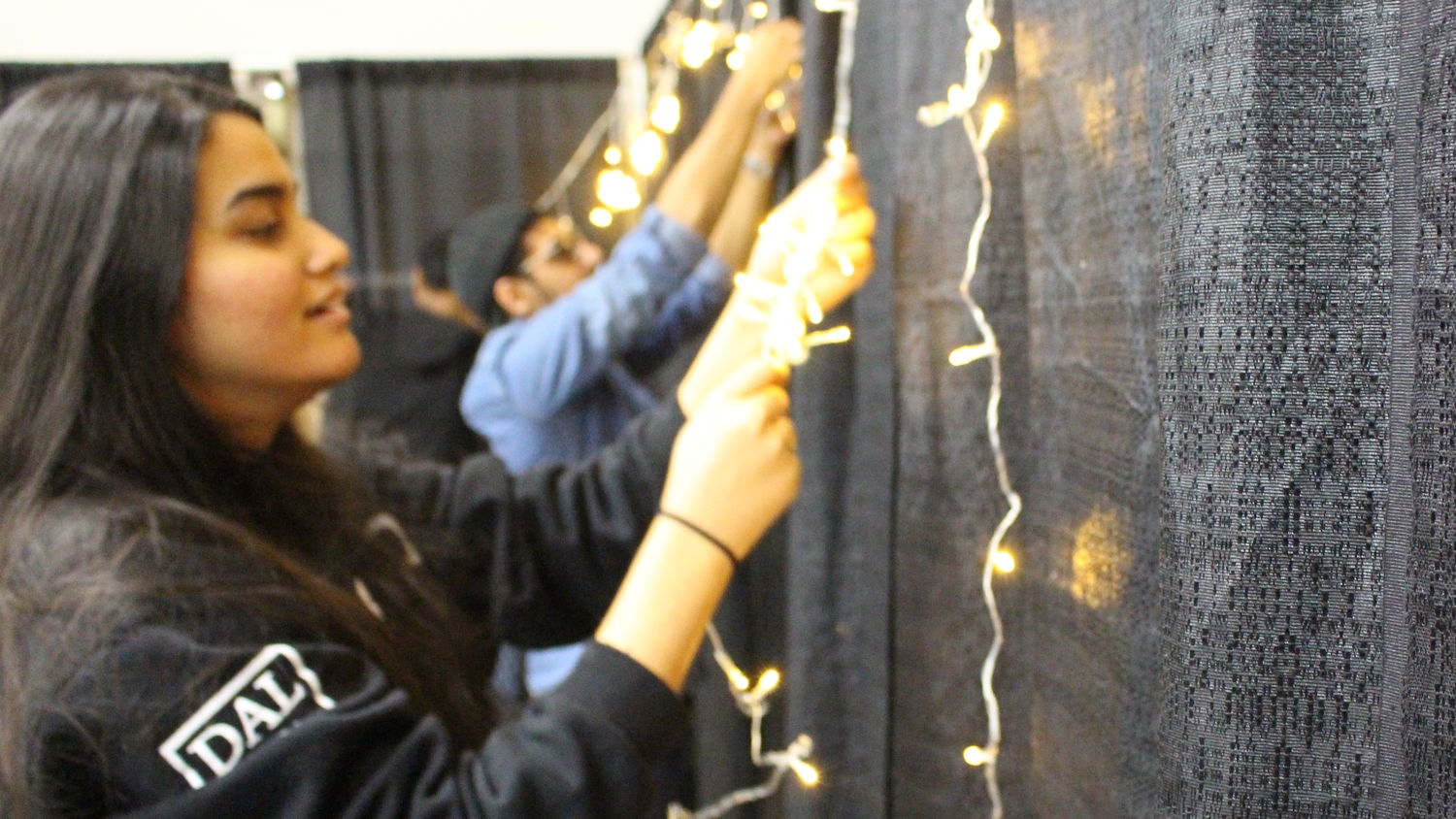
caption
Volunteers untangle lights to prepare for Diwali.Halifax is turning a big grey multi-purpose facility into a colourful vibrant place this weekend for the annual Diwali festival.
Diwali, or the Festival of Lights, is an Indian festival celebrated every fall. It symbolizes light winning over darkness.
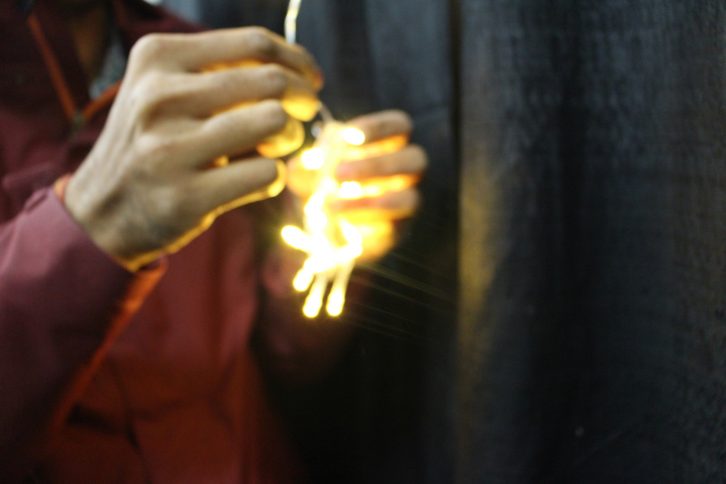
caption
Lights symbolize light over darkness, according to the festival.Many religions like Hinduism, Sikhism, Jainism and Newar Buddhism celebrate Diwali, yet each one has different beliefs and reasons to celebrate Diwali. In some areas it involves traditional stories passed on by generations.

caption
Two men hang marigold flower decorations.This year, the Indian Festivals Club of Nova Scotia is holding a Diwali carnival Friday, Saturday and Sunday at the Halifax Forum. Anyone, no matter their religious beliefs, are invited to attend.
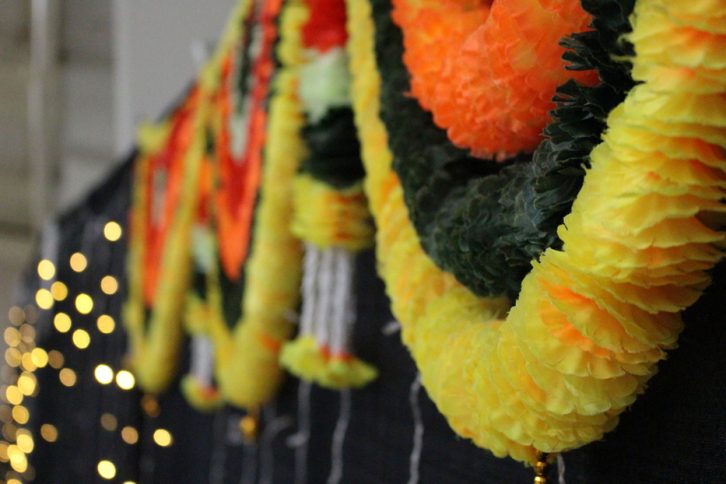
caption
Lights were added to the marigold flower decorations.While the festival was set up on Thursday, preparations took between three and four months. Nov. 7 was the original date for Diwali, but it couldn’t be celebrated as the following weekend was the Remembrance Day weekend.
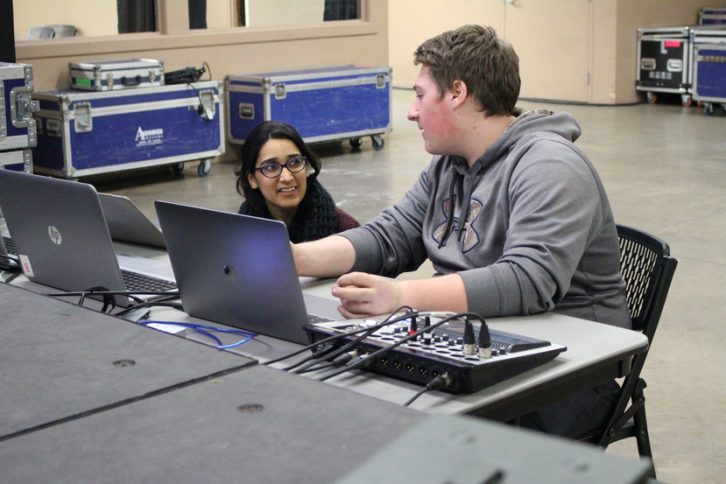
caption
Dolly Mirpuri (left) checks the light and sound equipment ahead of the weekend’s festivities.To Dolly Mirpuri, the performance co-ordinator for the festival, culture brings people together.
“That’s what we want to focus on,” she says.
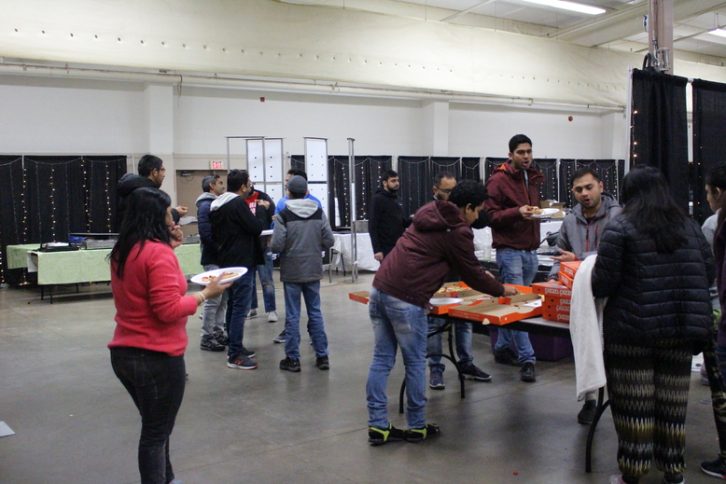
caption
Volunteers take a food break after long hours of working Thursday.Many volunteers stayed late Thursday night to ensure everything would run smoothly on Friday.
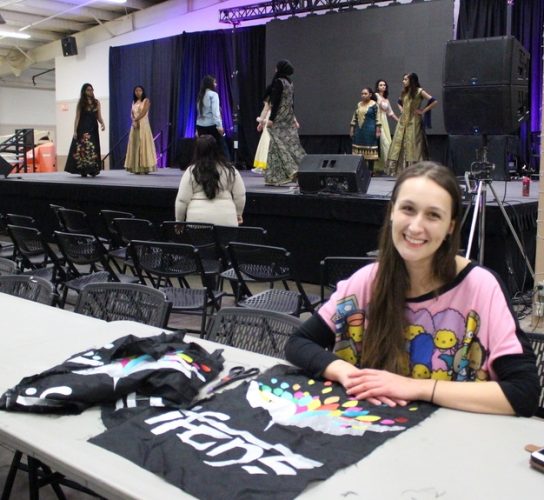
caption
Annie Wnuck worked on stitched signs on Thursday.Annie Wnuck, the master of ceremonies for the festival, has been volunteering for a year and a half with the IFCNS.
“I made a lot friends through this, and I think it is a chance for the community to … work toward the common goal of the event,” she says.
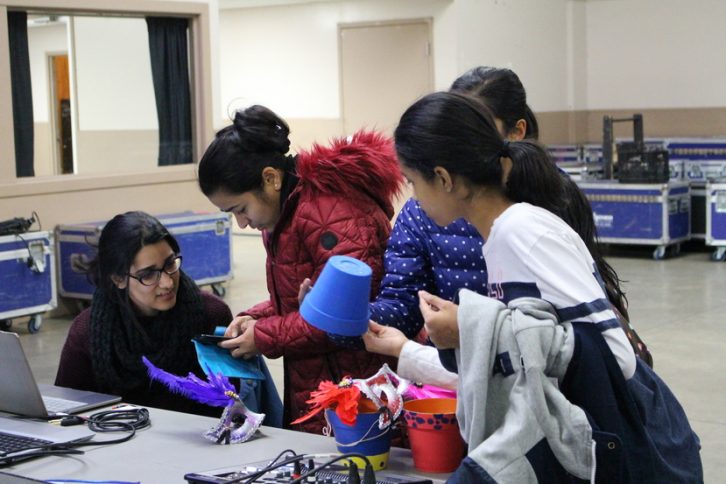
caption
Mirpuri talks with a few girls about their masks for a dance performance.Mirpuri is looking forward to the event.
“There are new immigrants in Halifax this year that celebrate Diwali away from home,” she says. “It is a big holiday back home. We don’t want them to miss out on it.”
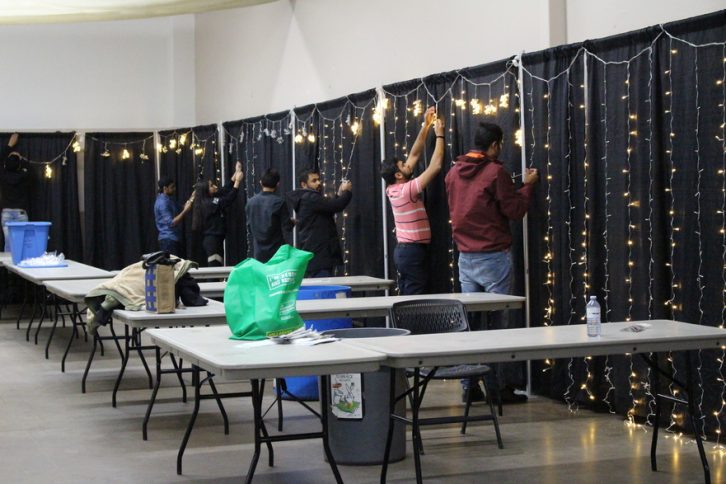
caption
Volunteers helped hang lights on Thursday.There are two teams who are working on the festival project. The first team includes 25 people who are executives and directors and the second team includes 15 to 20 people who plan the event and design decorations.
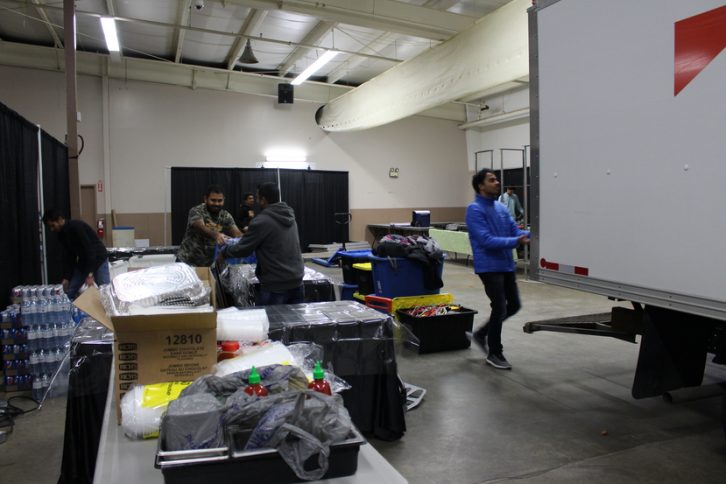
caption
Volunteers prep food ahead of the festival.The Diwali festival has been celebrated in Halifax since 2011, but the IFCNS took it over in 2014. According to the 2016 Nova Scotia census 3,385 people speak Indo-Aryan languages, which include Hindi and Punjabi.
Organizers expect about 8,000 people to take part in the festival over three days. A lot of supplies like water bottles, disposable party supplies and food tables are needed to keep the event going.
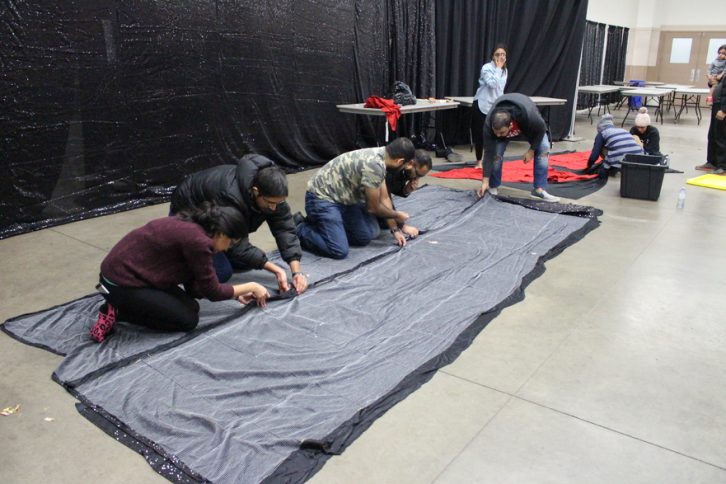
caption
Volunteers stretch fabric for a photo booth.
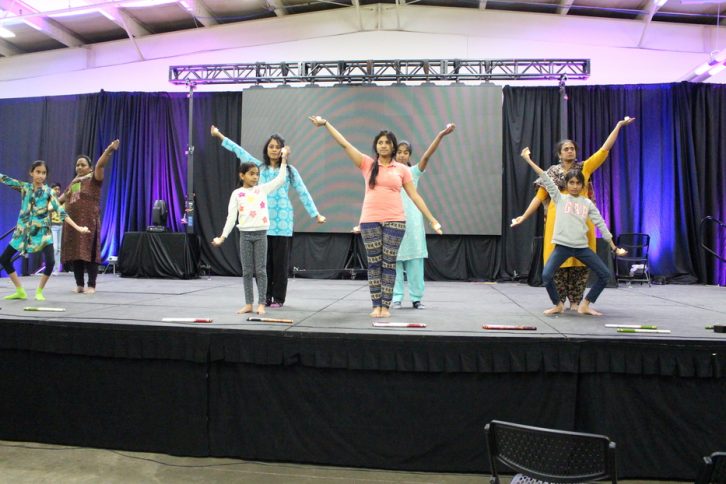
caption
Mothers and daughters practise a dance routine.
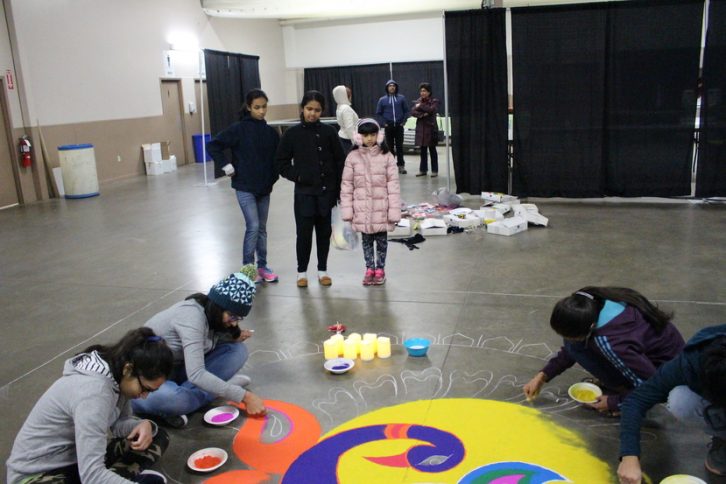
caption
Three girls watch as volunteers draw a Rangoli.
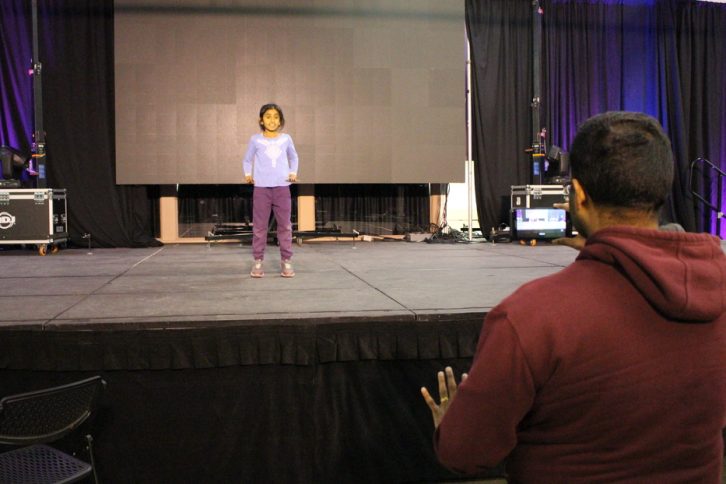
caption
A dad and his daughter practise their dance routine.Mirpuri says there are two goals for the festival: “It is a cultural awareness for people who do not know what Diwali is and to show young people their roots and cultural identity.”
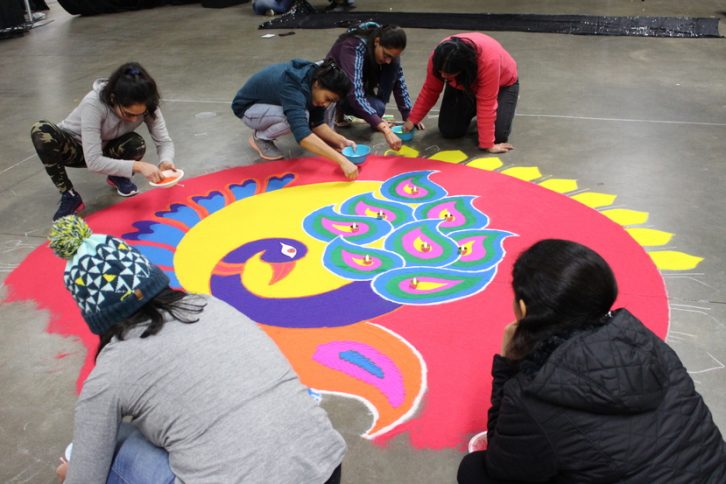
caption
Women paint a rangoli.This year, as part of the celebration, the IFCNS made the biggest rangoli in Atlantic Canada, which is 20 feet by 20 feet. It took more than nine hours to make.
Rangoli is colourful pattern drawn on the floor usually made by women. The purpose of rangoli is to welcome colours and gods into their homes.
Colours made of flour rice are mixed with natural colours so they won’t be harmful. The rangoli’s artist, Ripple Maniya, says the IFCNS imported the colours from India.
Usually people draw geometric shapes, or flower and petal shapes.
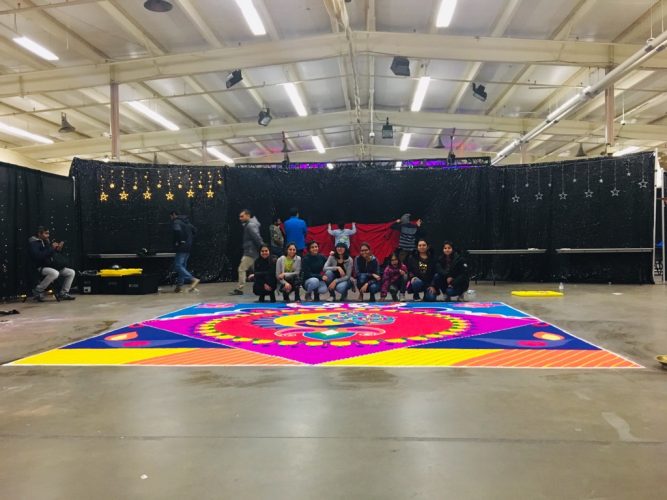
caption
The finished rangoli took more than nine hours to make.Maniya, who immigrated to Canada six months ago, is excited to spend her first Diwali in the country. She has been drawing rangoli for 10 years, a skill she learned in India. She says it’s an important part of Diwali.
“It is the colour that inspires people to make their lives beautiful and colourful,” she says.
She hopes the size of the rangoli will draw people’s attention during the festival.
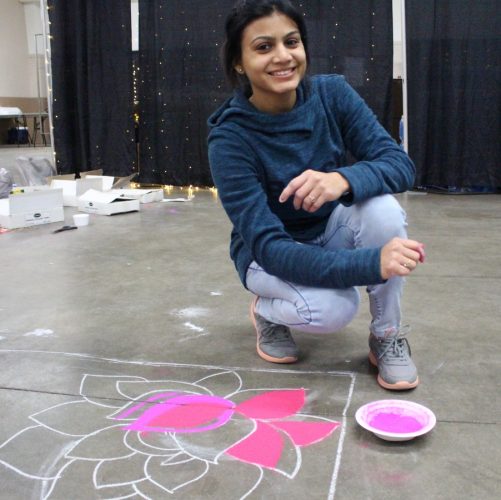
caption
Ripple Maniya works on the biggest rangoli in Atlantic Canada.The carnival will include many activities, including dance performances, a fashion show where young girls wear their Indian traditional clothes, food, henna and fireworks.

caption
Girls practise for their fashion show.IFCNS funds the event itself, based on vendors and revenue from the door ($3 for entry).
“Our aim is not to make money; our aim is to promote culture and sense of belonging,” Mirpuri says.

